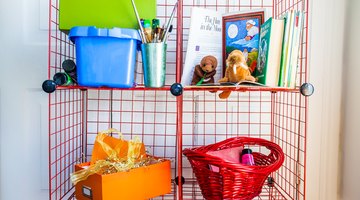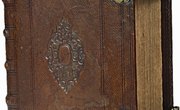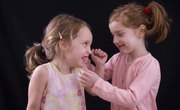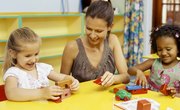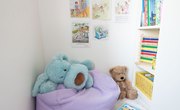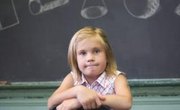Grounded in the idea that children are curious and learn from their environments, Reggio Emilia differs from other educational philosophies in its use of in-depth projects, child-led class content and peer collaboration. Classrooms set up in Reggio Emilia classrooms are rooted in the educational program's philosophy. In this approach, the classroom becomes another teacher, according to the website Scholastic Teachers. Designing the toddler classroom in the Reggio Emilia approach means organizing the environment in a way that's pleasing to the senses, teaches aesthetic awareness and engages the child as part of the learning process.
Add Plenty of Organization
Toddlers can learn how to sort items into categories through the organized environment of a Reggio Emilia classroom, according to Earlychildhood News. Create spaces to store materials that are out in the open. Instead of putting all of the art materials or colorful blocks away in closets and drawers, use storage bins on a shelf. Make the storage pleasing to the child's eyes and design a rainbow of storage options. For example, organize the paints into like-colored bins. The red paints go in the red bin, the blue in the blue bin and so on. The toddlers can match the colors after they are done painting and place the bins onto open shelves.

Create Well-Defined Spaces
Organization in the Reggio Emlia classroom doesn't just include how you store materials and play items. Creating an organized space for your toddlers means defining differed places for learning. Choose parts of the classroom that you will use for specific purposes. Designate spaces for art, blocks or building, books, group meetings, pretend play and science. Section the areas off by using furniture as borders or rugs as boundaries. For example, the low bookshelves that hold the paint and paper bins can define your art area. This will help the toddlers to understand what they are supposed to do in each area of the classroom without you having to remind them. Doing so will also play to the toddler's growing sense of independence.

Aim for an Aesthetically Pleasing Environment
Aesthetics are key to any Reggio Emilia classroom, according to the Early Childhood and Parenting Collaborative at the University of Illinois, Urbana-Champaign. The design of your toddler's classroom should not only focus on function. The environment should also please your young students' eyes. Do away with the sterile classroom setting and create a warm, inviting one. Display the toddlers' artwork on the walls within easy view. Instead of hanging the collages and paintings on a boring brown cork bulletin board, post them at toddler height with brightly colored clips. Use comforting, natural or homelike accents to make your toddlers feel welcome. This may include living plants or dried flowers.
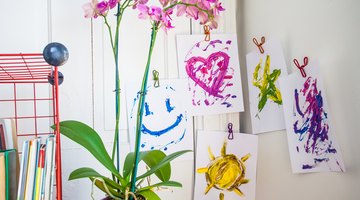
Encourage Exploration in the Room
In the Reggio approach, classrooms aren't just organized. They are also accessible. The toddler is beginning to assert her sense of independence. Giving her simple choices can help her to build this skill. The classroom should help to develop independent thinking through the availability of materials for exploration. For example, keep collections of natural objects out for the toddlers to explore. Instead of picking one area to keep open, provide a variety of objects, toys and items in the different classroom spaces. Your design could include toddler-height tables with art items, books or science tools arranged on them. Make sure that all of the shelves and other furniture that holds class items are within easy reach of the toddler. That said, keep safety in mind. Secure bookcases and other potential hazards to walls with anchors and follow your school's safety guidelines.

Related Articles
References
- Scholastic Teachers: Classroom Organization: The Physical Environment
- Earlychildhood News: Creating Peaceful Environmental Designs for the Classroom
- NEA Today: Reggio Emilia Approach Gives Students a Voice in the Curriculum
- Scholastic Teachers: The Reggio Emilia Approach
- PBS Parents: Approaches to Learning: 2 to 3
Writer Bio
Based in Pittsburgh, Erica Loop has been writing education, child development and parenting articles since 2009. Her articles have appeared in "Pittsburgh Parent Magazine" and the website PBS Parents. She has a Master of Science in applied developmental psychology from the University of Pittsburgh's School of Education.

